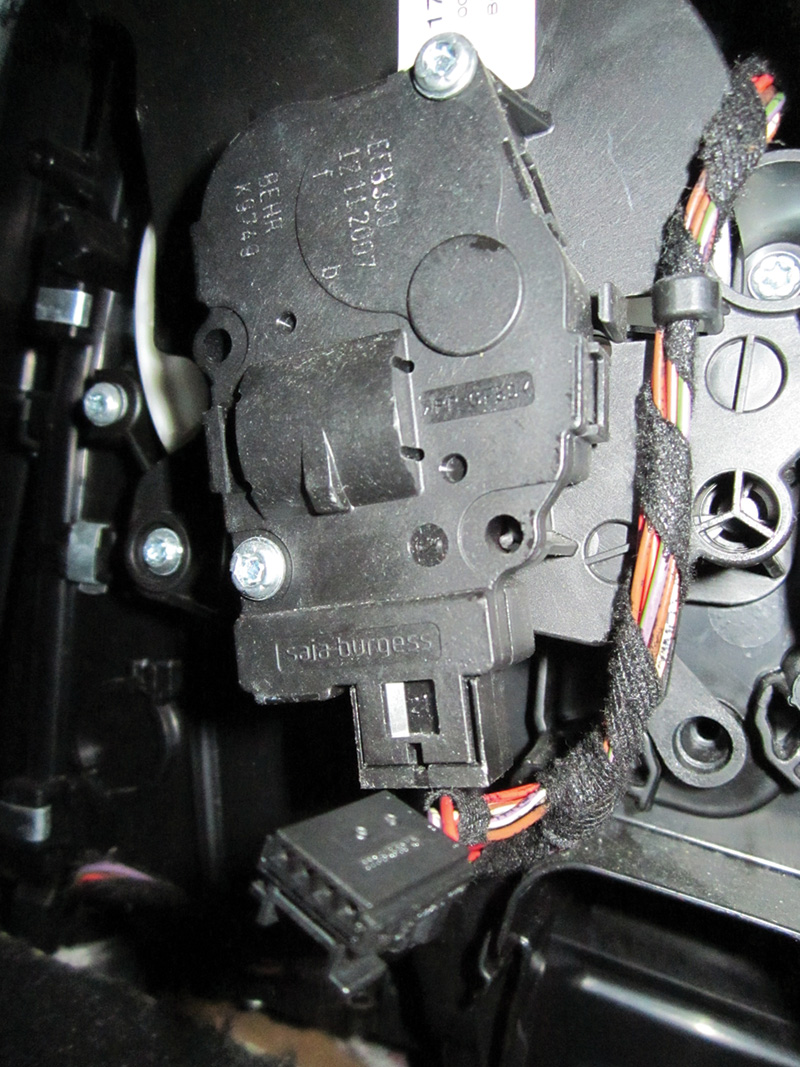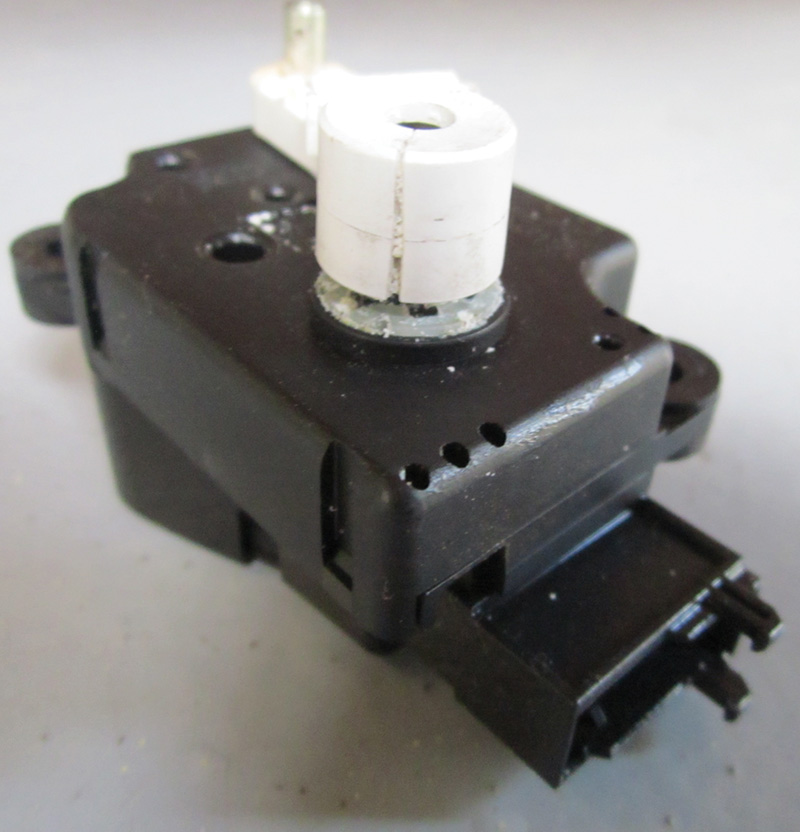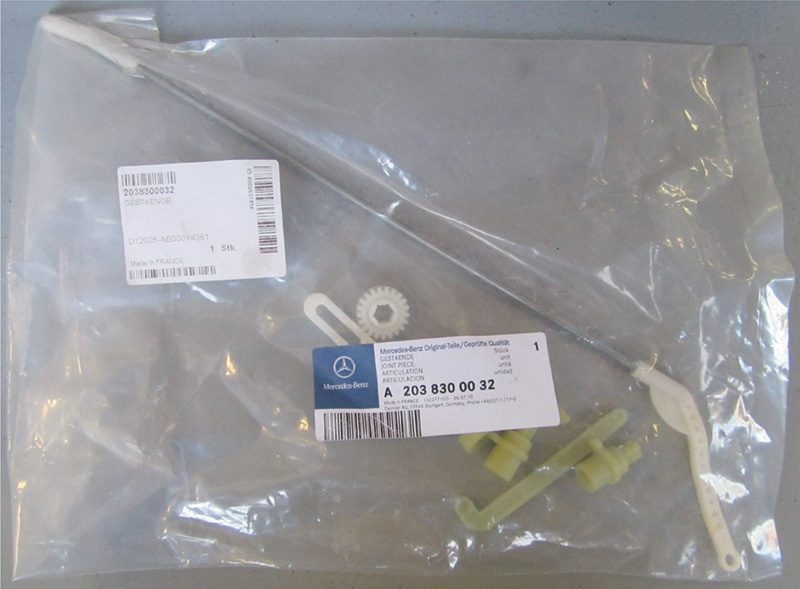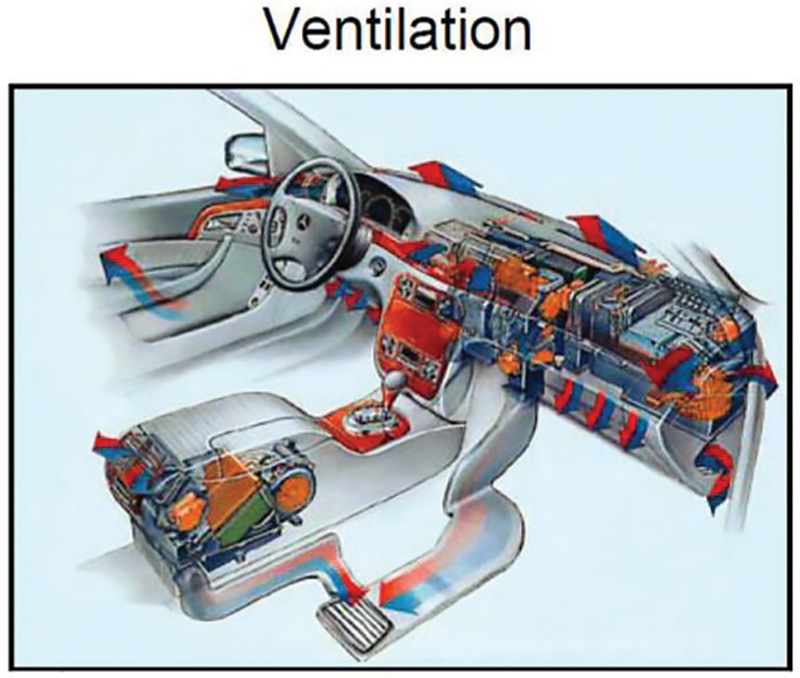Mercedes-Benz has gone far beyond cables and vacuum to control HVAC accurately.
As you may have read many times in StarTuned, virtually all aspects of how we control automotive systems have changed radically in the last several decades, especially as we move ever further from analog to digital. Mercedes-Benz climate control has not been immune to this revolution. In fact, many innovations have made their way into heating, ventilation, and air conditioning (HVAC) systems and all are important in their own way (a few have been covered in previous editions of StarTuned). In keeping with that theme, we’ll take a brief look at airflow; specifically, vent actuation.
A Behind The Scenes Peek
In the late 1930s, auto manufacturers started taking passenger cabin climate control seriously. In those early cars, heating and air conditioning were completely separate systems from one another. Air conditioning being largely an under-dash add-on with very little control beyond blower speed. It wasn’t until the late 1960s that complete behind-the-dash integrated systems started to show up as a factory option (integrated meaning heating, defrosting, air conditioning, and ventilation combined into one “air box”). These first systems were mechanically controlled by either opening or closing dash vents by hand or rotating and slide switches that pushed or pulled Bowden cables to control the positions of doors located in the heater box. Cable control meant the vehicle occupants had to continually manipulate the controls to maintain a desired cabin temperature and airflow.
The 1970s ushered in the age of pneumatically (negative pressure; a.k.a vacuum) controlled ventilation. This system used diaphragm actuators that allowed the pneumatic system to be self-regulating. This meant that, with the addition of a few sensors, a controller, and vacuum switch block climate control became largely automated. Auto control led to greater cabin comfort and occupants could now set consistent temperature and airflow. These systems for the time were generally very dependable, but had some drawbacks:
- The vacuum source was engine-supplied and thus subject to disruptions in the event of engine problems; in the case of diesels, it required extra duty from the external engine-driven vacuum pump.
- Lots of tubing was used to supply dash vacuum actuators, and these added complexity to the system. Vacuum tubing and connectors were prone to breakage while attempting to repair faults.
- Vacuum actuators were bulky and required larger dashboards to accommodate the system.
- Actuators were slow to react, making accurate interior temperature control difficult at times.
- Vacuum-driven systems were in play for decades before the next wave of innovation hit.
Moving in a new way
At the beginning of the new millennium, Mercedes-Benz brought drive-by-wire technology to climate control with an electronic system. Replacing old vacuum elements with electric and digitally-driven stepper motors not only changed the way vents and flaps are moved, but also how the system as a whole is diagnosed and repaired. Stepper motors are different from conventional DC motors — they are brushless. The motors’ outer casing is made up of multiple electromagnets surrounding a central toothed armature. By actuating each individual electromagnet via a pulse-width signal in a sequence or steps, the motor can be precisely rotated. Adding a greater number of electromagnets inside a motor results in finer steps that can be made. Depending on the application, stepper motors can make one step for a simple open-or-closed actuation, a half-step for a partial actuation, or micro-steps in precise degree increments. An example of micro stepping would be the fine control for a blend air door to regulate temperature.
As with any technology, there are almost always pros and cons. Because of their compact design and precise control, stepper motors are ideally suited for climate control. This means that stepper motor use in vent control has proven to be a significant change that has shown virtually no downside. When combining stepper motor technology with all the other innovations, it makes today’s HVAC system vastly improved over those of previous generations.
Benefits contributed by stepper motors
- High torque in a compact design; smaller actuators take up less space and adds to overall size reduction in an HVAC case.
- Flexibility in the design. These self-contained motors can be placed in tighter configurations to accommodate more ventilation options. This is one of the main reasons Mercedes-Benz is able to offer multiple climate zones within the same cabin space.
- Sealed motors are quiet, and, being brushless, produce no carbon dust to contaminate moving parts.
- Digital operation greatly reduces the network of wiring needed as compared to the maze of vacuum tubing in a pneumatic system.
- Electronic control offers a quicker and more accurate diagnosis. The climate controller is able to determine motor assignment and position, and can flag fault codes if a malfunction has occurred.
- Faster and more accurate control. This allows climate control temperature to be achieved quicker and with more accuracy.
- Lower cost to produce and higher reliability.

We’ve come a long way from the vent slides and under dash-mounted air conditioner of this 1968 280SL.
The only real drawback for stepper motor technology is the loss of torque at high speed. Although not a problem when used to drive HVAC vents and flaps, the loss of torque makes it not suitable for fan or window motor usage. We suspect that engineers are already working hard to improve the design and we in the field will see this technology show up elsewhere in the near future.
The same, but different

With this LIN system stepper motor, there are no color-coded plugs since these actuators are given a digital address.
Stepper motors are unserviceable and must be replaced when faulty. That being the case, we’ll not specifically look at the inner workings and instead focus on some common issues that show up in the shop. At the moment, there are two basic stepper motor systems employed by Mercedes-Benz, and each has to be looked at little differently when it comes to diagnosis and service.
The first stepper motor system found on vehicles such as the W203 C-Class and W 220 S-Class were Controller Area Network (CAN) based, meaning they operate on the interior CAN, and as such can be influenced by other faults in the network. All stepper motors are identical, so how does the controller know which is which? On the CAN system, all motors work off of a single ribbon cable originating from the climate control panel. Spliced onto the cable are colored connectors. Each connector (depending on color) has specially-placed dividers that open or allow closed control pins on the motor itself. This could be compared to the way you would place jump terminals on a computer hard drive, or flipping dipswitches on older remote controls. These first systems differ slightly with some using a three-wire cable to assign motors, and others a four-wire cable on more complex options that require additional motors.
The second system found on all later Mercedes-Benz models is Local Interconnect Network (LIN) based. LIN is a sub-network used to drive serial or multiple like components. The advantages of LIN are that it’s cheaper to implement, reduces the burden on the interior CAN bus, and (because of its simple programming) can be expanded easily as future needs develop. LIN also eliminates the need for special connectors for motor identification. As with the CAN system, LIN-based motors are identical. The LIN system has the ability to assign a motor digitally to a specific location to perform a specific task. In essence, this is a form of version coding accomplished through a teach-in process.
Synchronicity
As stated earlier, this system has proven to be very reliable; however, from time to time repairs are needed whether there is an internal failure or because of outside influences. By far the most common and misdiagnosed problems with the stepper motors system is a vent not operating correctly. It’s sometimes heard as a motor in perpetual motion, a clicking noise, or just no vent action at all. Time and time again stepper motors are condemned for the problem when, in fact, they work perfectly. The most likely culprit in these situations is a broken or cracked actuator linkage. These linkages are plastic and subject to wear. They are, in some cases, easily replaced with minimal disassembly. In other cases, it may require an involved dash tear-down with a significant cost. This makes accurate diagnosis of this (or any problem for that matter) with climate control by the Independent Service Provider a wise practice. Guesswork could cost both you and your customer financially, or add unneeded stress due to a bad diagnosis not based on facts. Other problems to look out for, as on many other systems on a vehicle, are if there are multiple failures or faults at the same time. The same basic diagnostic analysis is applicable, such as:
- What do they have in common?
- Have you checked fuses for power and grounds?
- Are there network controllers offline?
- Verify vehicle specific coding
- Technical service bulletins?
- Any aftermarket components or recent previous work performed?

In this under-dash shot of a 2004 ML500 W163, if you look closely you can see where transmission fluid wicked all the way through the harness to the transmission controller above. The ATF then spilled out and contaminated the HVAC stepper motors directly underneath. The initial customer complaint was erratic vent operation.
No matter the fault, once a repair has been preformed it’s important to note stepper motors are not plug-and-play. This seems to be the biggest stumbling block for a lot of shops and the largest reason for tech calls associated with this system. It’s almost always the same statement word for word: “We replaced Part X and the vents still do not function correctly.” If motors have been disconnected or replaced, then they must all be taught to play together again. Restoring harmony to the symphony of motion requires a conductor, in this case the Star Diagnosis System (SDS) or an equivalent diagnostic tool. On early CAN system stepper motors, they already have assigned positions because coding plugs are used. That means this system only needs to be resynchronized, or, as Mercedes-Benz calls it, “normalization.” During this process, all motors are driven to end stops in both directions. By using motor current and position sensing data pulses delivered by an internal Hall sensor, the controller is able to learn the fine position of each motor and its start and stop position. On LIN systems, normalization is the same as above, but there is an additional step that must be performed before that can take place. Unplugged or replaced LIN steppers must go through a “teach-in” process. SDS will run a sequence of actuation to determine and then assign motors to a specific location. Once the locations have been learned, then fine control can be learned through the normalization process.
Remember, due to the sophistication of today’s HVAC system a small disruption can have profound effects.










0 Comments